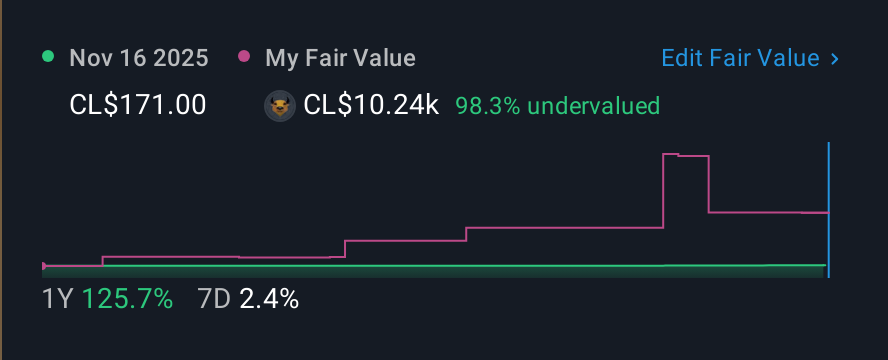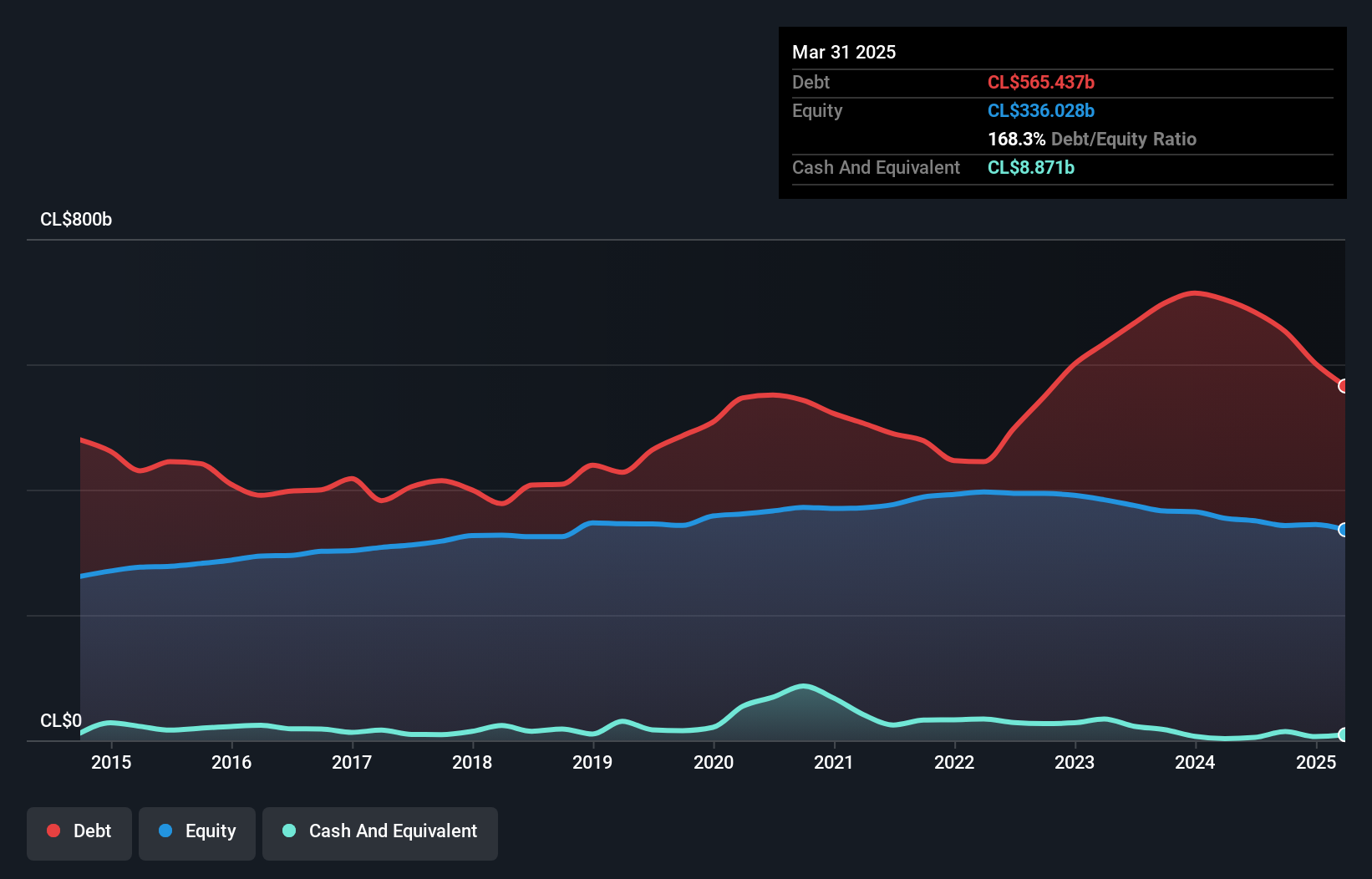- Chile
- /
- Consumer Durables
- /
- SNSE:SOCOVESA
Here's Why Socovesa (SNSE:SOCOVESA) Has A Meaningful Debt Burden

David Iben put it well when he said, 'Volatility is not a risk we care about. What we care about is avoiding the permanent loss of capital.' So it might be obvious that you need to consider debt, when you think about how risky any given stock is, because too much debt can sink a company. As with many other companies Socovesa S.A. (SNSE:SOCOVESA) makes use of debt. But the real question is whether this debt is making the company risky.
When Is Debt A Problem?
Generally speaking, debt only becomes a real problem when a company can't easily pay it off, either by raising capital or with its own cash flow. Ultimately, if the company can't fulfill its legal obligations to repay debt, shareholders could walk away with nothing. However, a more common (but still painful) scenario is that it has to raise new equity capital at a low price, thus permanently diluting shareholders. Of course, plenty of companies use debt to fund growth, without any negative consequences. When we examine debt levels, we first consider both cash and debt levels, together.
What Is Socovesa's Debt?
You can click the graphic below for the historical numbers, but it shows that Socovesa had CL$565.4b of debt in March 2025, down from CL$703.2b, one year before. And it doesn't have much cash, so its net debt is about the same.

How Healthy Is Socovesa's Balance Sheet?
The latest balance sheet data shows that Socovesa had liabilities of CL$672.7b due within a year, and liabilities of CL$32.7b falling due after that. Offsetting these obligations, it had cash of CL$8.87b as well as receivables valued at CL$111.7b due within 12 months. So its liabilities total CL$584.8b more than the combination of its cash and short-term receivables.
The deficiency here weighs heavily on the CL$91.4b company itself, as if a child were struggling under the weight of an enormous back-pack full of books, his sports gear, and a trumpet. So we'd watch its balance sheet closely, without a doubt. After all, Socovesa would likely require a major re-capitalisation if it had to pay its creditors today.
View our latest analysis for Socovesa
We use two main ratios to inform us about debt levels relative to earnings. The first is net debt divided by earnings before interest, tax, depreciation, and amortization (EBITDA), while the second is how many times its earnings before interest and tax (EBIT) covers its interest expense (or its interest cover, for short). Thus we consider debt relative to earnings both with and without depreciation and amortization expenses.
Strangely Socovesa has a sky high EBITDA ratio of 17.3, implying high debt, but a strong interest coverage of 50.5. This means that unless the company has access to very cheap debt, that interest expense will likely grow in the future. Pleasingly, Socovesa is growing its EBIT faster than former Australian PM Bob Hawke downs a yard glass, boasting a 139% gain in the last twelve months. The balance sheet is clearly the area to focus on when you are analysing debt. But you can't view debt in total isolation; since Socovesa will need earnings to service that debt. So when considering debt, it's definitely worth looking at the earnings trend. Click here for an interactive snapshot.
Finally, a company can only pay off debt with cold hard cash, not accounting profits. So we clearly need to look at whether that EBIT is leading to corresponding free cash flow. During the last three years, Socovesa burned a lot of cash. While investors are no doubt expecting a reversal of that situation in due course, it clearly does mean its use of debt is more risky.
Our View
On the face of it, Socovesa's conversion of EBIT to free cash flow left us tentative about the stock, and its level of total liabilities was no more enticing than the one empty restaurant on the busiest night of the year. But at least it's pretty decent at covering its interest expense with its EBIT; that's encouraging. Overall, it seems to us that Socovesa's balance sheet is really quite a risk to the business. For this reason we're pretty cautious about the stock, and we think shareholders should keep a close eye on its liquidity. When analysing debt levels, the balance sheet is the obvious place to start. However, not all investment risk resides within the balance sheet - far from it. Case in point: We've spotted 4 warning signs for Socovesa you should be aware of, and 1 of them is a bit concerning.
If you're interested in investing in businesses that can grow profits without the burden of debt, then check out this free list of growing businesses that have net cash on the balance sheet.
New: Manage All Your Stock Portfolios in One Place
We've created the ultimate portfolio companion for stock investors, and it's free.
• Connect an unlimited number of Portfolios and see your total in one currency
• Be alerted to new Warning Signs or Risks via email or mobile
• Track the Fair Value of your stocks
Have feedback on this article? Concerned about the content? Get in touch with us directly. Alternatively, email editorial-team (at) simplywallst.com.
This article by Simply Wall St is general in nature. We provide commentary based on historical data and analyst forecasts only using an unbiased methodology and our articles are not intended to be financial advice. It does not constitute a recommendation to buy or sell any stock, and does not take account of your objectives, or your financial situation. We aim to bring you long-term focused analysis driven by fundamental data. Note that our analysis may not factor in the latest price-sensitive company announcements or qualitative material. Simply Wall St has no position in any stocks mentioned.
About SNSE:SOCOVESA
Socovesa
Engages in the real estate development and construction businesses under the Almagro, Socovesa, Pilares, and Desarrollos Comerciales brands in Chile.
Fair value with mediocre balance sheet.
Similar Companies
Market Insights
Community Narratives




